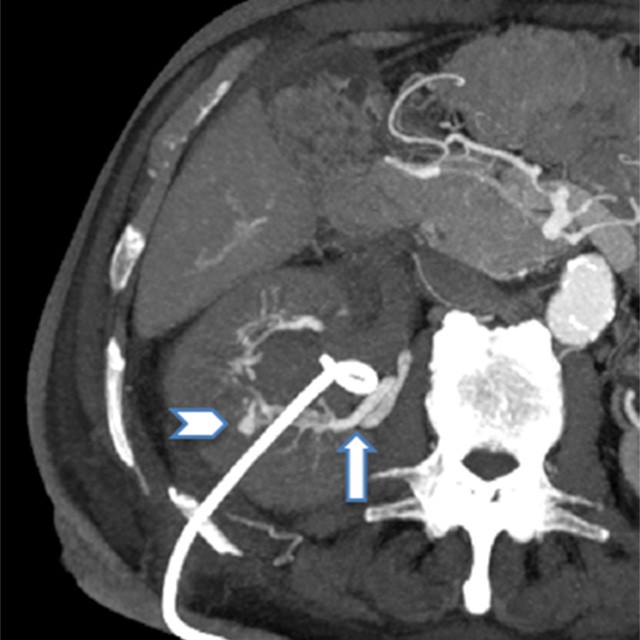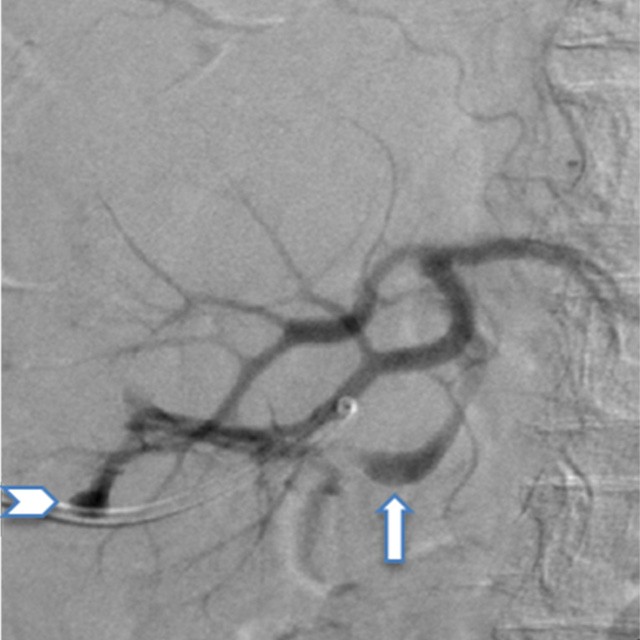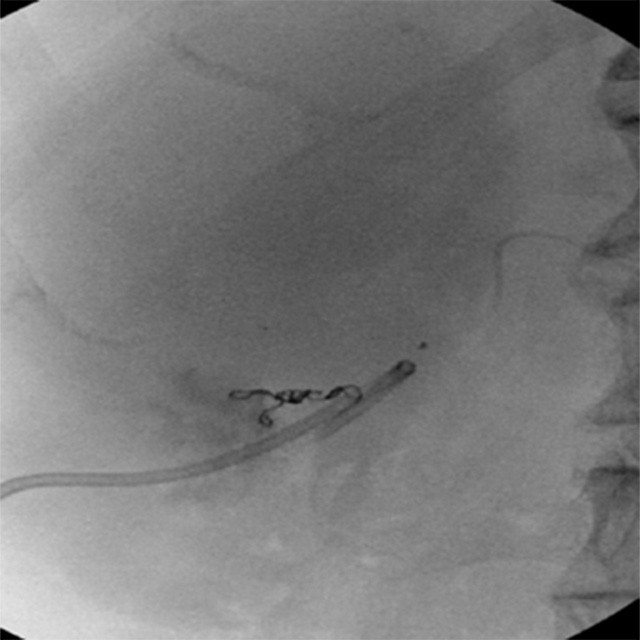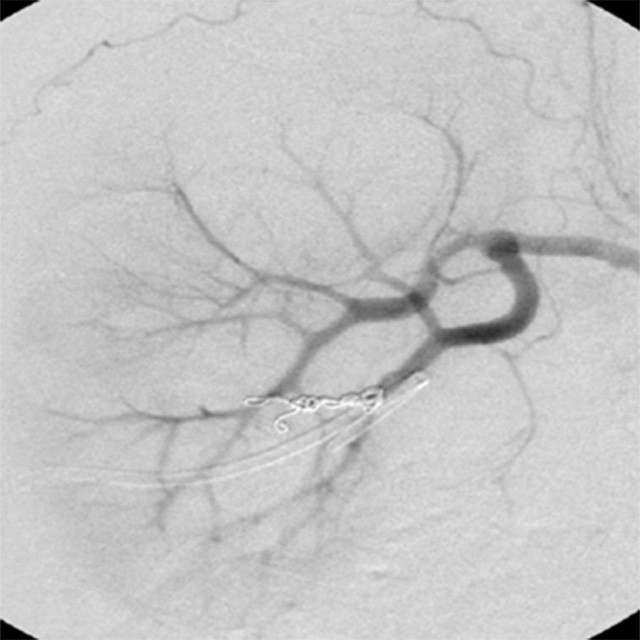Endovascular treatment of iatrogenic arteriovenus fistula with hematuria post nephrostomy

Angio-CT
A 73-year old male with infiltrating bladder cancer, underwent endoscopic resection. Three months later, he showed persistent hematuria and anemia so the urologists inserted a bilateral nephrostomy to correct the hemoglobin values. Six days later, the patient still showed hematuria and low hemoglobin, so we performed an Angio-CT scan that confirmed blood in the urinary tract.
Furthermore, the arterial acquisition showed the presence of AVF with a distal pseudoaneurysm in proximity of percutaneous access.

Diagnostic Angiography
We decided to perform an endovadscular procedure to treat this complication with a mini invasive approach.
The preliminary Digital subtraction angiography, obtained through 5 French (1.67mm) diagnostic catheter, confirmed the AVF with early opacification of the renal vein (arrow) and the pseudoaneurysm (arrowhead).

Treatment
A torqueable straight-shape Direxion 0.021" microcatheter was chosen to performed a superselective catheterization of an afferent vessel.
The embolization was reached using five 0.018" coils , 4 mm in diameter, in the anterior-lower segmental artery of the right kidney.
The deployment was successfully performed through the Direxion™ 0.21" (0.53mm) inner lumen.

Result
Selective arterial embolization was achieved also thanks to Direxion slotted nitinol hypotube technology. This structure is designed to maximize torque transmission in the catheter shaft giving the microcatether a great torqueability.
The final digital subtraction angiography check confirmed the complete embolization of the vessel with disappearance of arterovenous fistula and pseudoaneurism.
Dr. Stefano Marcia - Chief of Radiology Department & Interventional Radiologist – “SS. Trinità Hospital” – Cagliari
Dr. Alessio Spinelli – Dr. Stefano Marini - Dr. Emanuele Piras - Interventional Radiologists – “SS. Trinità Hospital” – Cagliari











